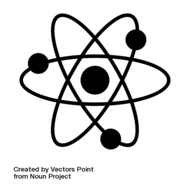Hidden Figures
by Gregory MacDougall 3 years, 11 months agoEach month, the VDOE Science Team is writing about a Focus on a Scientist and publishing it in VDOE Science Update. In it, we are highlighting diversity of scientists throughout the years. It was my turn to write this month.
I had fun researching and writing about one of the scientist/mathematicians who was highlighted in the movie Hidden Figures. I published a brief description of Katherine Johnson, an African American woman who worked here in Virginia at Langley. In the article, I tried to show how laws against discimination open opportunities for all talented peoples and how diversity results in excellence.
Here is the article.
Katherine Johnson (Hidden Figures)
Have you ever played with a garden hose, spraying it into the air at different angles and watch how far it goes? Maybe you have even projected the hose upward to see if the water would fall on an unsuspecting brother or sister. As it turns out, there is a lot of science and mathematics that goes into predicting how projectiles work. It gets even more complicated when considering extremely fast speeds, increasing air resistance, changing wind speeds, and decreasing acceleration due to gravity as you go higher and higher from Earth’s surface. Now imagine you have to do all of these calculations by hand!
The 2016 movie Hidden Figures dramatized such accomplishments of three African American women who lived here in Virginia, working at NASA Langley. Although Hollywood has a way of stretching the phrase “based on actual events,” the book of the same name was the result of years of meticulous research conducted by the author. Their story is part of a larger story of minorities who were also extraordinary scientists and mathematicians.
Katherine Johnson was one of the three African-American women highlighted in Hidden Figures. Extremely inquisitive and talented, Katherine graduated from college when she was 18. She had heard that Langley was hiring minorities due to Roosevelt’s executive order of 1941 that resulted in the "banning discriminatory employment practices by Federal agencies.” She joined the segregated West Area Computing team at Langley in 1953.
Katherine used geometry to predict space travel and landings. She was able to determine the paths for spacecraft to orbit Earth and to land on the Moon. Her work was so renowned that John Glenn insisted that engineers “get the girl” to run the same numbers that the computer ran before one of his flights. “If she says they’re good,’” Katherine Johnson remembers the astronaut saying, “then I’m ready to go.”
Katherine was awarded the Presidential Medal of Freedom in 2015 by President Barack Obama. She died on Feb. 24, 2020 at the age of 101.
NASA’s West Area Computing Unit ended segregation in 1958. The following quote summarizes NASA’s commitment to excellence in diversity.
"As seen in the movie Hidden Figures, NASA has a long-standing cultural commitment to excellence that is largely driven by data, including data about our people. And our data shows progress is driven by questioning our assumptions and cultural prejudices – by embracing and nurturing all the talent we have available, regardless of gender, race or other protected status, to build a workforce as diverse as its mission. This is how we, as a nation, will take the next giant leap in exploration."

Many people have a lot of fun with anything you can think of and write down. I'm one of those people who like what you write io games
Fantastic article on Katherine Johnson! 🌟 Her contributions to space travel and her role in breaking down barriers are truly inspiring. Highlighting her story not only celebrates her achievements but also underscores the importance of diversity in advancing science. Great job bringing her legacy to light! basketball stars
Katherine Johnson’s story is a powerful example of how perseverance and talent can overcome barriers.
@snake game